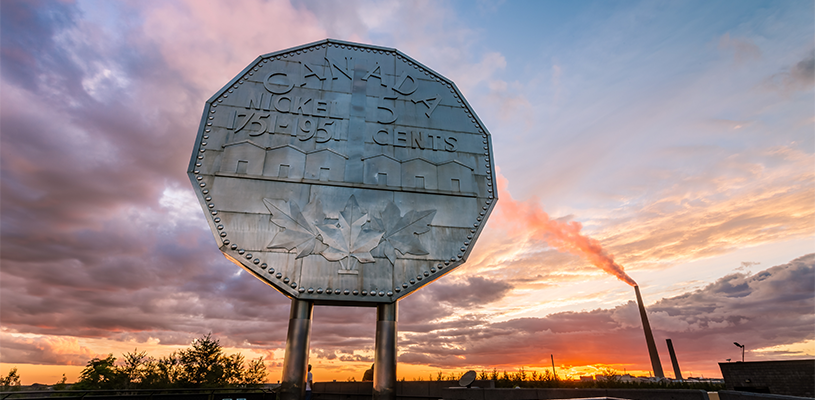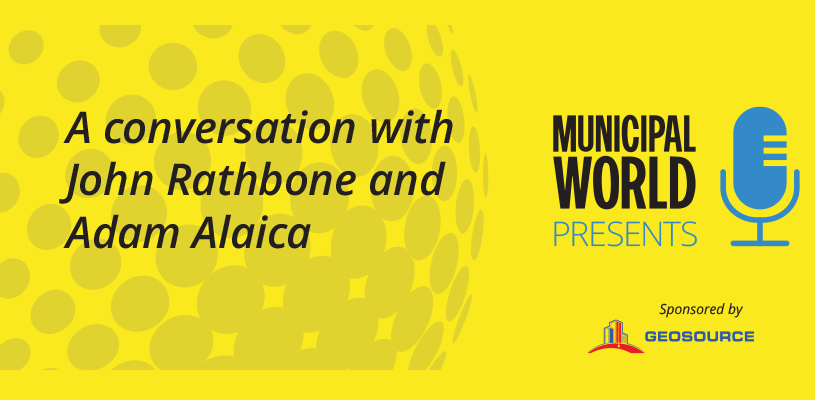The Metamorphic North

Sudbury transformations provide good practice restoration strategies
Sudbury is a nickel mining town filled with creative, resourceful, resilient people living on the hardest metamorphic rock on the planet. From early chance findings of valuable minerals over a century ago to the recent restoration of the land by people planting over a million trees, this is a community that’s not afraid to tackle challenges and figure out how to do it together.
The tree planting effort, or better known as the re-greening, has now caught the attention of a host of communities from around the world keen to learn about proven land, air, and water restoration strategies following intensive, prolonged periods of mineral extraction.
Re-Greening Strategies in Motion
The reforestation process is now moving from the early planting of rapid-growth species, such as birch, to more enduring trees, such as red and white pine. The birch are examples of sacrificial trees that provide food for later generations of trees. It is expected that in another quarter century the forests of the Sudbury area will have been returned to their pre-mining life, with over a hundred years of growth still ahead of them by that time.
Inspired by the international success of the re-greening, Sudbury has also been active through the same period with achieving and maintaining some of the cleanest air in Canada. A major milestone in this work was recently met with the decommissioning of the super stack at the main smelter operated by Vale. For now, the stack serves as a memory of the quality of air previously experienced locally, and how much can be done to improve the air in our environment.
Water quality is also a focus, and has been the area of study of scientists at the Vale Living with Lakes Centre on Lake Ramsey. Having achieved several successes with respect to rebalancing acidity in region’s lakes and restoring fisheries, there is now a turn to focus on the local tailings ponds. These reservoirs of unused portions of extracted ore are open to air and precipitation. The goal now is for scientists and extraction representatives to collaborate on methods for substantially improving the quality of water flowing from the ponds to levels equivalent to those that existed pre-extraction era.
Local mining companies are also working quickly to move to softer forms of mining, offering significant environmental dividends. These strategies include quantum shifts in extraction processes, methods for extending the output of existing mines, and reducing tailings output. The speed and scale of these transitions is almost mind-boggling, even compared to the massive expansions in production capacity that occurred in the mid-20th century.
But now, there is no choice. The global shift to renewable energy, electrification, and the aim to be carbon neutral by 2050, is a story that is now over a decade old. Post-COVID, this train of innovation, realization, and scaling up will be accelerating even more quickly as extraction industries race to produce the quantities of nickel, copper, and other minerals essential to support this global shift.
Transforming the Mining Industry
Decades of smarter, more environmentally sound mineral extraction and refinement lie ahead while mining industry representatives gain international credibility by becoming expert at working through the hardest rock known on earth. It is likely that the region will also serve as a training site for extra-terrestrial mining, just as it was for geological study during the Apollo missions.
The transformation to soft processes in extraction include shifts to remote operation of electrified automated extraction equipment. The layout of WiFi infrastructure through active shafts and drifts is already well-advanced. This reduces the need for infrastructure such as fresh air supply to support humans, one of the most costly aspects of underground mining and a principal deterrent to extracting ore at even deeper levels than today. The further development and refinement of 3D ore body modelling is continuing apace. The faster that extraction can be redirected in real time to the most valuable veins of ore, the higher the refined mineral output and the lower the cost per tonne.
Probably one of the most innovative processes developed in Sudbury, and now used at mining sites around the world, involves the extension of the life and output of existing mines while also reducing waste output. This involves detailed 3D modelling of existing mining infrastructure, including access and ventilation shafts and horizontal drifts where the ore is extracted. Although extremely hard, even the metamorphic rock in Sudbury requires a minimum vertical proximity limit between drifts so that one drift does not cave in on another below.
Historically, this limited the amount of ore that could be removed or extracted. Now, however, smart analysis of the geology of each mine has enabled scientists and engineers to develop recipes for a binder, like a mortar paste, to be blended with waste extracted rock from the mining operation, and then repacked/backfilled into the old drift once mining at that level is complete. The result is a significant increase in refined ore output and the replacement of otherwise previously unused waste material.
Transformation on the Ground
This transformation of mining industry processes has been accompanied by several developments on the ground as well. The master planning and implementation of an active transportation network has realized several kilometres of new cycling and walking trails. Conservation Sudbury continues to actively manage and curate over 9,000 square kilometers of watershed lands in what is one of the largest municipally managed geographic areas in Canada. The region is particularly well known for its 300 lakes, and recognition is given for the lands as the traditional territory of the Anishinaabe people as set out in the Robinson Huron Treaty.
The Community Energy and Emissions Plan has set ambitious goals for improving the environmental footprint of the community. Central to the plan is that the area has some of the highest solar intensities in Canada. With the large geography that the municipality manages, this bodes well for the development of an extensive solar energy infrastructure that is anticipated to be the primary energy provider by 2050. Some of the largest consumers of electrical energy are those in the mining industry, so being able to provide significant amounts of local, clean, and reliable electrical energy will make investment in this renewable energy infrastructure cost-effective.
✯ Municipal World Insider and Executive Members: You might also be interested in Robert Kerr’s article: Mobilizing local climate action.
Ted Wilson is an architect teaching northern building design and environmental performance at Laurentian University’s McEwen School of Architecture in Sudbury, Ontario.
Related resource materials:



